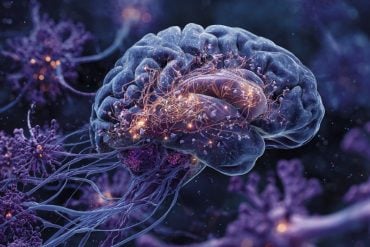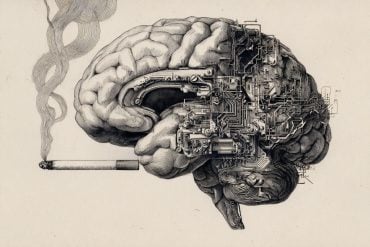Summary: According to researchers, there is little evidence to suggest violence in PG-13 movies is related to real world violence or an increase in violent behavior.
Source: Springer.
New research suggests that policy makers should remain focused on issues that have been demonstrated to impact criminal behaviour, such as family environment, mental health, poverty and education.
Claims about PG-13 rated movie violence and its link to violence in society are not consistent with available evidence, according to study published in the Springer journal Psychiatric Quarterly. Authors Christopher J. Ferguson at Stetson University and Patrick Markey at Villanova University in the United States, examined possible associations between violence and gun use in PG-13-rated movies, and levels of gun related homicide, homicide and aggravated assault in US society.
Some previous research, including studies conducted as recently as 2018 has suggested that parents may become desensitized to violence in PG-13 rated movies. Such studies have speculated that this desensitization may make them more likely to bring their children to see such movies.
Christopher J. Ferguson said: “Evidence suggests that edgier, more violent content may increase in PG-13 and PG movies over time. This is because PG-13 rated movies may be considered particularly marketable as action-oriented fun but without the graphicness that parents may consider inappropriate for younger children. This had been called a ‘ratings creep’. However, whether it is an actual problem for public health remains unknown; that’s the research gap we aimed to fill in this study.”
To test trends in PG-13-rated movie violence against trends in violence in society, including homicides and youth violence, the authors examined several different datasets. They assessed data on PG-13-rated movies collected by other researchers during previous research, violent crime data provided by the FBI, youth violence data sourced from the National Crime Victimization Survey, and US Census Bureau data on socioeconomic factors such as poverty, education and economic stability.
Analysing data from 1985 to 2015, the authors hypothesized that years in which films were more violent would also exhibit higher rates of violent crime, and that a rise in gun violence depicted in PG-13-rated movies would be associated with changes in gun related homicides. Contrary to their hypothesis, the authors found that although movies tended to become more violent over time, rates of violence and homicides declined during the same time period. This remained the case even after the authors controlled for other variables previously related to violent crime, such as poverty, education, or economic inequality. The findings suggest that PG-13-rated movie violence is unrelated to violence in society.

Ferguson said: “Our analysis of data on violent crime and depictions of violence in PG-13-rated movies shows no evidence of a public health concern. Thus, the ‘low hanging fruit’ argument that suggests parents should reduce their children’s exposure to violent movies as a simple way of reducing exposure to risk factors for crime, may cause more harm than good. It may distract from the hard work of dealing with real pressing problems by focusing society, parents and policy makers in an illusory simple fix.”
Patrick Markey said: “Evidence suggests that violent and antisocial behaviour result from a complicated interaction of numerous factors but media violence does not appear to be one of these factors. This may be because individuals perceive media exposure differently than they do real-life exposure to violence.”
The authors suggest that policy makers remain focused on issues that have been demonstrated to impact criminality, such as family environment, mental health, poverty and education.
Source: Anne Korn – Springer
Publisher: Organized by NeuroscienceNews.com.
Image Source: NeuroscienceNews.com image is in the public domain.
Original Research: Abstract for “PG-13 Rated Movie Violence and Societal Violence: is there a Link?” by Christopher J. Ferguson and Patrick Markey in Psychiatric Quarterly. Published January 18 2019.
doi:10.1007/s11126-018-9615-2
[cbtabs][cbtab title=”MLA”]Springer”Violence in PG-13 Rated Movies Not Linked to Violence in US Society.” NeuroscienceNews. NeuroscienceNews, 19 January 2019.
<https://neurosciencenews.com/pg-13-violence-10587/>.[/cbtab][cbtab title=”APA”]Springer(2019, January 19). Violence in PG-13 Rated Movies Not Linked to Violence in US Society. NeuroscienceNews. Retrieved January 19, 2019 from https://neurosciencenews.com/pg-13-violence-10587/[/cbtab][cbtab title=”Chicago”]Springer”Violence in PG-13 Rated Movies Not Linked to Violence in US Society.” https://neurosciencenews.com/pg-13-violence-10587/ (accessed January 19, 2019).[/cbtab][/cbtabs]
Abstract
PG-13 Rated Movie Violence and Societal Violence: is there a Link?
Recent scholarship has suggested that the frequency of violence in PG-13 rated movies has increased in recent years. Although some scholars have expressed concern that such an increase may have public health implications, this has remained untested. In the current article, trends in PG-13 movie violence are tested against trends in violence in society, including both homicides and youth violence. Raw correlations suggest that PG-13 rated movie violence is inversely related to actual violence in society. However, controlling for autocorrelations suggests that the best interpretation is that PG-13 rated movie violence is unrelated to violence in society. Caution is advised for scholars to avoid implying that PG-13 rated movie violence may have a causal effect on crime in society.







